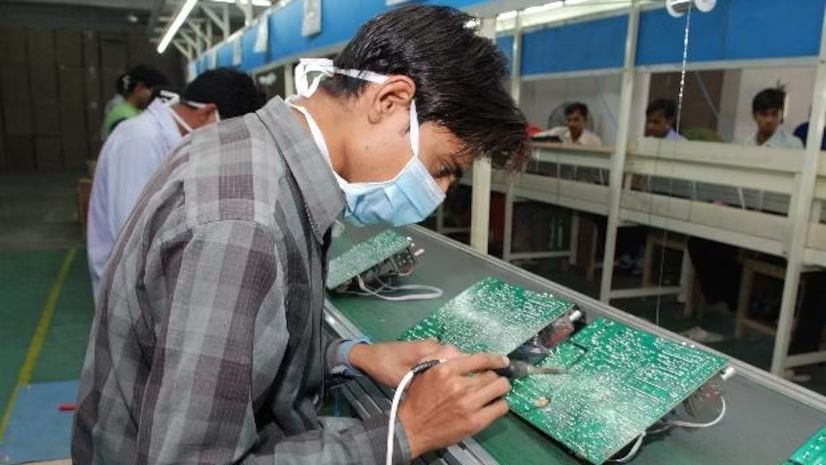The Indian electronics market has undergone a significant transformation over the past five years. Indian electronic brands, once prominent players in the market, have seen a noticeable decline, while Japanese, Korean, and Chinese brands have increasingly dominated the industry. This shift is driven by various factors including technological advancements, market strategies, and consumer preferences. This article explores the dynamics of this transition, backed by data and insights from recent market trends.
1. Overview of the Indian Electronics Market
The Indian electronics market, valued at approximately ₹5.4 trillion ($66 billion) in 2023, is one of the fastest-growing sectors in the country. The market encompasses a wide range of products including consumer electronics, home appliances, and IT hardware. Over the last five years, the market has witnessed a marked shift from Indian brands to international giants from Japan, Korea, and China.
2. Decline of Indian Electronic Brands
a. Market Share Erosion
Indian electronic brands, such as Videocon, Intex, and Micromax, have experienced a significant decline in market share. Five years ago, these brands were key players in the market, offering a variety of products from televisions to mobile phones. However, their market share has steadily decreased as they struggled to compete with the technological innovations and competitive pricing of their international counterparts.
- Videocon: Once a leading brand in the consumer electronics space, Videocon has faced financial difficulties and market exit. The company’s inability to adapt to changing technology and consumer preferences has contributed to its decline.
- Intex: Known for its budget-friendly smartphones and consumer electronics, Intex has seen a sharp drop in market presence due to intensified competition and a lack of innovation.
- Micromax: Micromax, which was a dominant force in the Indian smartphone market, has lost ground to international brands due to its failure to keep up with technological advancements and evolving consumer needs.
b. Challenges Faced by Indian Brands
- Technological Lag: Indian brands have struggled to keep pace with rapid technological advancements. Many Indian companies failed to invest in research and development, leading to a technological lag compared to their international competitors.
- Quality and Reliability Issues: Perceptions of lower quality and reliability have also hurt Indian brands. Consumer confidence has shifted towards brands known for their consistent performance and high-quality standards.
- Supply Chain and Distribution Problems: Inefficiencies in supply chain management and distribution networks have further exacerbated the decline of Indian electronic brands. International brands have established more robust and efficient supply chains, enhancing their market presence.
3. Rise of Japanese, Korean, and Chinese Brands
a. Technological Superiority and Innovation
International brands from Japan, Korea, and China have made significant inroads into the Indian market by leveraging their technological superiority and innovation.
- Japanese Brands: Companies like Sony and Panasonic have maintained their strong presence in the Indian market by offering high-quality products and innovative technologies. Sony, in particular, has continued to be a leader in the television and audio segments, known for its superior picture quality and sound systems.
- Korean Brands: Samsung and LG have expanded their market share by introducing cutting-edge technologies and diverse product ranges. Samsung’s dominance in the smartphone and television markets can be attributed to its advanced technology and strong brand reputation. LG’s innovations in home appliances, such as smart refrigerators and washing machines, have also contributed to its success in India.
- Chinese Brands: The rise of Chinese brands, including Xiaomi, Oppo, and Huawei, has been particularly notable. Xiaomi has captured a significant share of the smartphone market with its affordable yet feature-rich devices. Oppo and Huawei have also gained popularity through their innovative products and aggressive pricing strategies.
b. Competitive Pricing and Value for Money
One of the key factors behind the success of Japanese, Korean, and Chinese brands in India is their competitive pricing and value-for-money offerings. These brands have managed to strike a balance between quality and affordability, appealing to a broad spectrum of consumers.
- Xiaomi: Xiaomi’s entry into the Indian market with its budget-friendly smartphones and smart home devices has disrupted the market. The company’s strategy of offering high specifications at competitive prices has resonated with price-sensitive Indian consumers.
- Samsung and LG: Both brands have leveraged their extensive product portfolios and technological advancements to offer high-quality products at various price points. This strategy has helped them capture market share across different segments.
c. Effective Market Strategies
Japanese, Korean, and Chinese brands have employed effective market strategies to strengthen their position in India.
- Aggressive Marketing and Promotion: These brands have invested heavily in marketing and promotional activities, creating strong brand awareness and consumer loyalty. They have also leveraged digital platforms and social media to engage with the younger demographic.
- Local Manufacturing and Assembly: Many international brands have set up local manufacturing and assembly units in India to reduce costs and improve supply chain efficiency. For instance, Xiaomi and Samsung have established manufacturing facilities in India, contributing to their competitive pricing strategies.
- Customer-Centric Approach: International brands have focused on understanding and catering to the specific needs of Indian consumers. This customer-centric approach has allowed them to offer products that align with local preferences and requirements.
4. Future Outlook and Implications
a. Market Opportunities
The Indian electronics market presents significant opportunities for growth. The increasing adoption of smart technologies, growth in disposable income, and expanding middle class are expected to drive further demand for electronic products. International brands are likely to continue capitalizing on these trends by introducing innovative products and expanding their market presence.
b. Challenges for Indian Brands
Indian electronic brands will need to address several challenges to regain market share. Investing in research and development, improving product quality, and enhancing supply chain efficiency will be crucial. Additionally, Indian companies must focus on understanding consumer preferences and adapting their offerings accordingly.
c. Impact on Consumers
The rise of international brands has provided Indian consumers with a wider range of options and competitive pricing. While this has been beneficial for consumers, it has also highlighted the need for Indian brands to innovate and improve their offerings to remain relevant in the market.
5. Conclusion
The Indian electronics market has experienced a notable shift in the last five years, with Indian brands facing a decline and Japanese, Korean, and Chinese brands rising to prominence. This transformation is driven by technological advancements, competitive pricing, and effective market strategies employed by international players. As the market continues to evolve, both consumers and companies will need to adapt to the changing dynamics to navigate the opportunities and challenges ahead.






